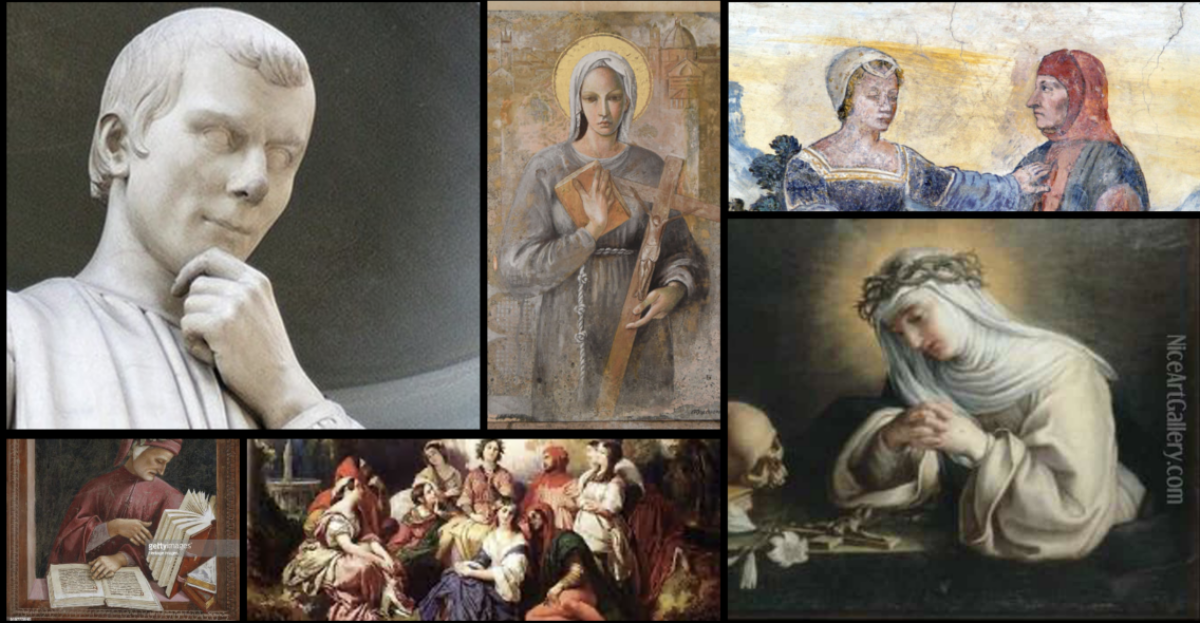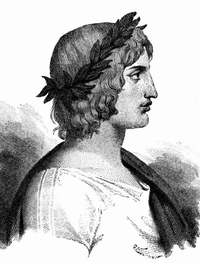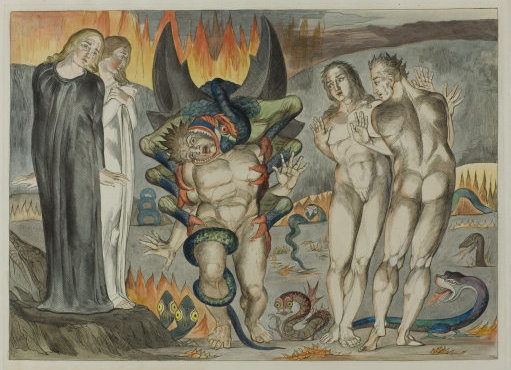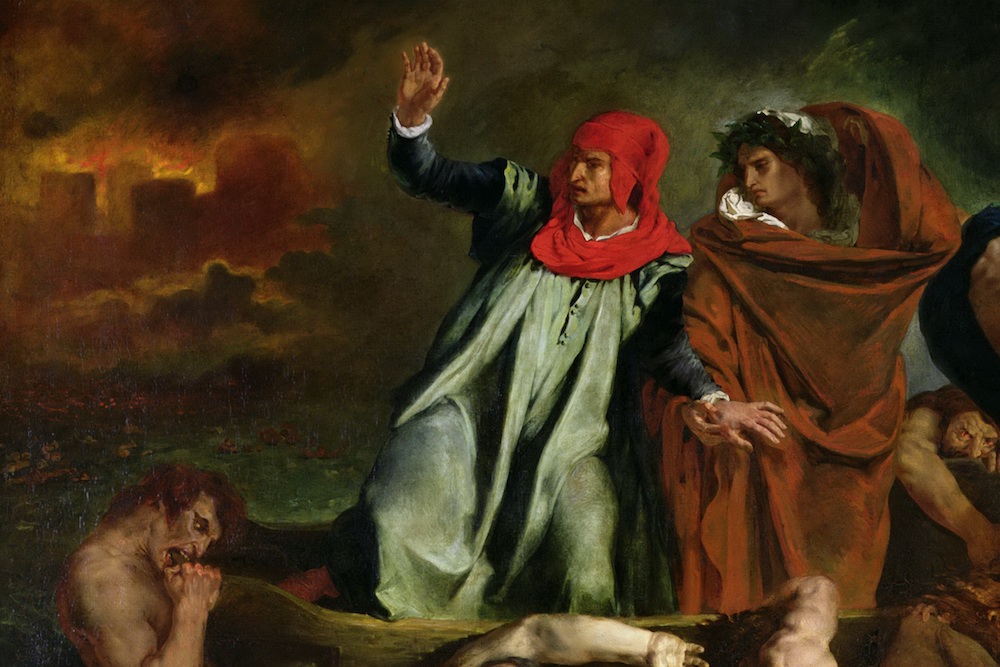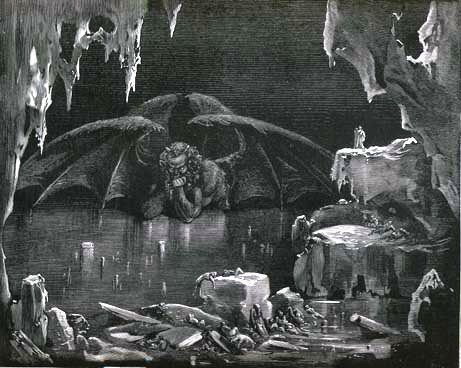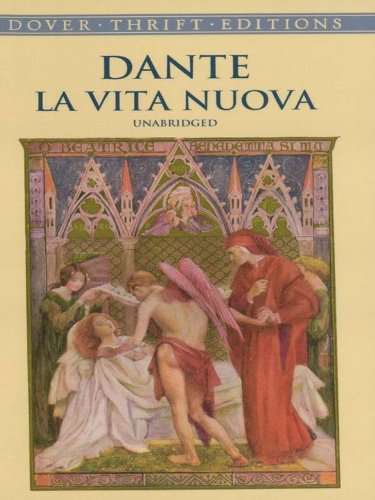The Divine Comedy, written by Dante Alighieri, is a three-part Italian narrative poem published in 1472. In this poem, Dante takes the reader through Inferno (Hell), Purgatorio (Purgatory), and Paradiso (Paradise). While doing this, he explores the essence of sin and how it disengages humans from their relationship with God. The Nine Circles of Hell include Limbo, Lust, Gluttony, Avarice and Prodigality, Wrath and Sullenness, Heresy, Violence, Fraud, and Treachery. The Seven Terraces of Purgatory, which relate to the seven deadly sins, are Pride, Envy, Wrath, Sloth, Avarice, Gluttony, and Lust. The Nine Spheres of Heaven include the Moon, Mercury, Venus, the Sun, Mars, Jupiter, Saturn, the Fixed Stars, and the Primum Mobile. Because of its significance over centuries, The Divine Comedy has been translated into several languages, even so, that Inferno has over 200 translations in English.
The publication of the Divine Comedy has had a monumental involvement with the Renaissance as a whole. For instance, the language that the Divine Comedy was written in. During this time, it was common to read poems written only in Latin because it was “considered to be the only language suitable for literary and philosophical purposes” (How Did Dante Influence the Renaissance – DailyHistory.Org, n.d.). He later resulted in writing the Divine Comedy in the language of Tuscan and also used influences from other Italian regional languages and Latin. This encouraged and motivated future writers to write in Tuscan, such as Petrarch and Boccaccio.
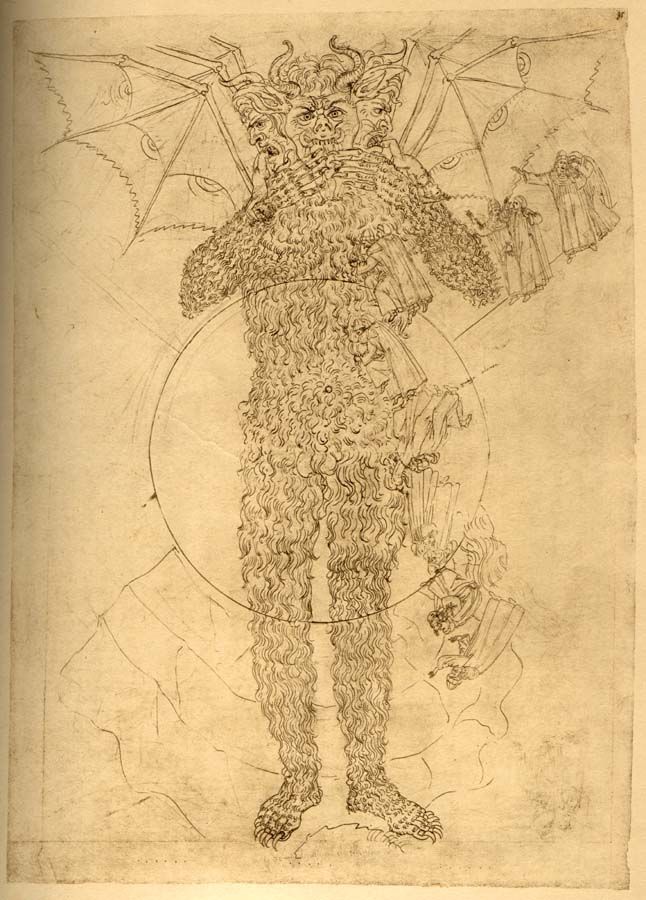
Another way The Divine Comedy influenced the Renaissance was through his description of Lucifer and Inferno. A painter by the name of Sandro Botticelli illustrated The Divine Comedy in its entirety. One painting, in particular, depicts the image of Lucifer in Canto 34. Dante describes Lucifer with three faces and in each mouth, he is chewing up sinners, and six ginormous wings: “Oh how great a marvel did it seem to me, when I saw three faces on his head! One was in front, and that was crimson;”… “In each of his mouths he was breaking a sinner with his teeth in the manner of a scutch, so that he made three suffer at once.” (Canto 34). Botticelli illustrated exactly that. Dante’s portrayal changed the way many viewed Lucifer in this time, and with the help of Botticelli, readers are able to place an image in their heads of what Lucifer looks like.
These are only a few of the immense amount of ways Dante’s Divine Comedy has influenced the Renaissance, and he will forever be recognized as one of the first “Renaissance Men” in history.
- How did Dante influence the Renaissance – DailyHistory.org. (n.d.). Daily History. Retrieved October 11, 2021, from https://dailyhistory.org/How_did_Dante_influence_the_Renaissance
- Inferno Quotes | Explanations with Page Numbers. (n.d.). LitCharts. Retrieved October 11, 2021, from https://www.litcharts.com/lit/inferno/quotes
- Dante’s Divine Comedy in Late Medieval and Early Renaissance art (article). (n.d.). Khan Academy. Retrieved October 11, 2021, from https://www.khanacademy.org/humanities/renaissance-reformation/late-gothic-italy/florence-late-gothic/a/dantes-divine-comedy-in-late-medieval-and-early-renaissance-art
- Shibboleth Authentication Request. (n.d.). Ebookcentral.Proquest.Com. Retrieved October 11, 2021, from http://ccny-proxy1.libr.ccny.cuny.edu/login?url=http://ccny-proxy1.libr.ccny.cuny.edu/ebrary/ccny-ebooks/unauthorized&url=https%3A%2F%2Febookcentral.proquest.com%2Flib%2Fccny-ebooks%2Freader.action%3FdocID%3D693941
